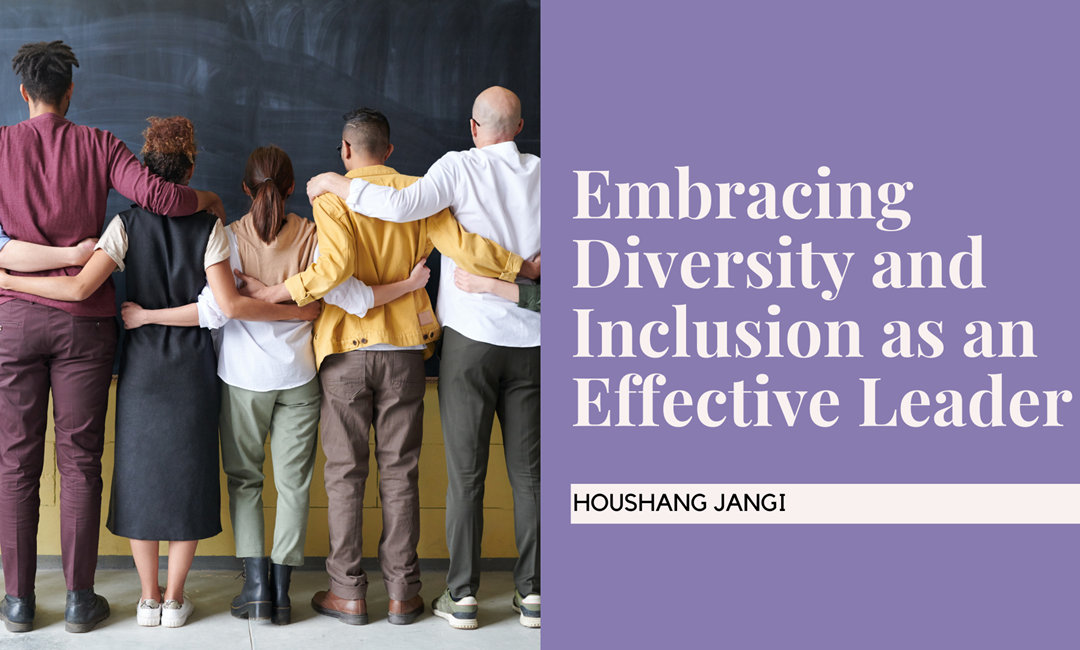In today’s diverse and interconnected world, embracing diversity and inclusion isn’t just a moral imperative—it’s a strategic advantage for organizations seeking to thrive in a global marketplace. Effective leaders understand that diversity goes beyond demographics; it encompasses different perspectives, experiences, and ways of thinking. Leaders can drive innovation, creativity, and organizational success by fostering a culture of inclusion and leveraging the unique strengths of a diverse workforce. Let’s explore why embracing diversity and inclusion is essential for effective leadership.
Firstly, embracing diversity and inclusion fosters innovation and creativity within organizations. When individuals from diverse backgrounds come together, they bring a wide range of perspectives, insights, and ideas to the table. By encouraging collaboration and embracing different viewpoints, leaders create an environment where innovative solutions can flourish. Diverse teams are more likely to challenge conventional thinking, identify new opportunities, and develop creative approaches to solving complex problems, giving organizations a competitive edge in today’s fast-paced business landscape.
Moreover, embracing diversity and inclusion enhances employee engagement and morale. Employees who feel valued, respected, and included are more likely to be engaged, motivated, and committed to their work. Inclusive leaders create a sense of belonging where all employees feel welcome and appreciated for their unique contributions. By fostering a culture of inclusion, leaders inspire loyalty and loyalty and loyalty, reducing turnover and improving overall organizational performance.
Additionally, embracing diversity and inclusion improves decision-making and problem-solving within organizations. When diverse perspectives are considered, leaders can make more informed and effective decisions that reflect the needs and preferences of a diverse customer base. Inclusive leaders encourage open dialogue and constructive debate, ensuring that all viewpoints are heard and considered before making decisions. By leveraging a diverse workforce’s collective intelligence and wisdom, leaders can make better decisions that drive positive outcomes for the organization.
Furthermore, embracing diversity and inclusion strengthens organizational resilience and adaptability. Organizations must be agile and responsive to evolving market trends, and customer needs in today’s rapidly changing business environment. Diverse teams are better equipped to adapt to change as they bring various skills, experiences, and perspectives to the table. Inclusive leaders empower their teams to embrace change and seize new opportunities, fostering a culture of resilience and agility that enables organizations to thrive in dynamic and uncertain times.
In addition, embracing diversity and inclusion enhances organizational reputation and brand value. Companies prioritizing diversity and inclusion are seen as progressive, socially responsible, and attractive employers. Inclusive leaders attract top talent from diverse backgrounds and build strong relationships with customers, partners, and stakeholders who value diversity and inclusion. By aligning their values with those of diverse stakeholders, leaders can enhance the organization’s reputation and competitive position in the marketplace.
In conclusion, embracing diversity and inclusion is essential for effective leadership in today’s diverse and interconnected world. By fostering a culture of inclusion, leaders can drive innovation, enhance employee engagement, improve decision-making, strengthen organizational resilience, and enhance organizational reputation. Leaders prioritizing diversity and inclusion in their leadership approach lays the foundation for a more inclusive, equitable, and successful organization.

